
Articles by Nepal
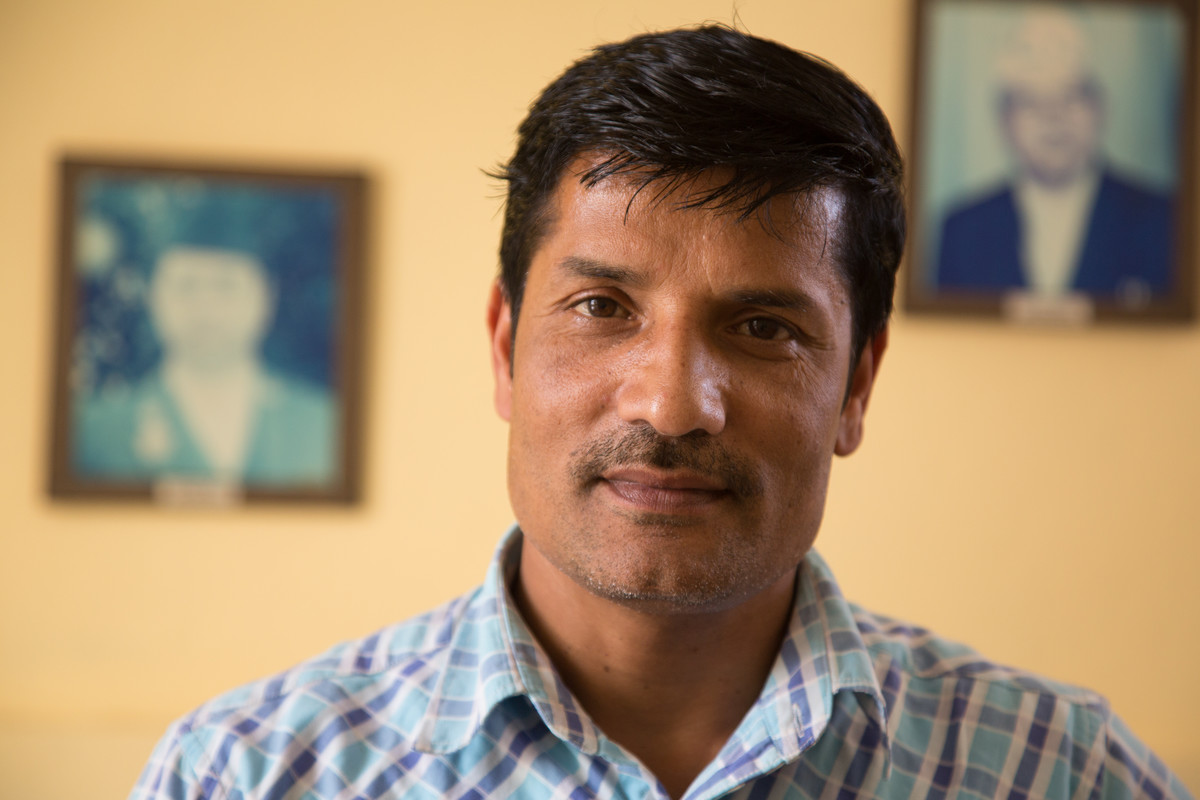
How Family Planning Association of Nepal Youth programmes are saving teens on the brink of suicide
“One time, a sixteen-year-old girl came to see us with an unwanted pregnancy, on the point of suicide,” says Sharad Kumar Argal. “She had been abused by her family and the baby was the result of incest. She was about to commit suicide.” The girl had never heard of safe abortion, explains Sharad, who works as Kathmandu Valley branch manager for the Family Planning Association of Nepal (FPAN), the country’s leading family planning NGO. “Then, very luckily, she happened to come to our youth-friendly centre. From there, she found out about abortion services and she had an abortion through FPAN. FPAN brought her back from the brink of suicide.” For Sharad, FPAN’s youth programmes are the lifeblood of the organisation. In his twenty years at the organisation, he has seen major changes in family planning law and sexual rights in Nepal, from the legalisation of abortion in 2002, to the introduction of National Family Planning Day in 2014. One of the changes that he talks passionately about is FPAN’s work supporting young people, and the role of youth volunteers in these activities. “If you go back 20 years, even talking to people about family planning and especially condoms was very difficult,” he says. “People were hesitant and didn’t want to hear about that in a public space. That made family planning very difficult: we needed to do home to home visits to make family planning available.” “But now, with the passage of time, this has become much better and easier. These days even our youth peer educators are involved in distributing condoms and pills.” The data underlines this change. “The use of family planning 20 years’ ago was only 20-25 per cent,” Sharad says. “Whereas now, more than 50 per cent have access to family planning services.”
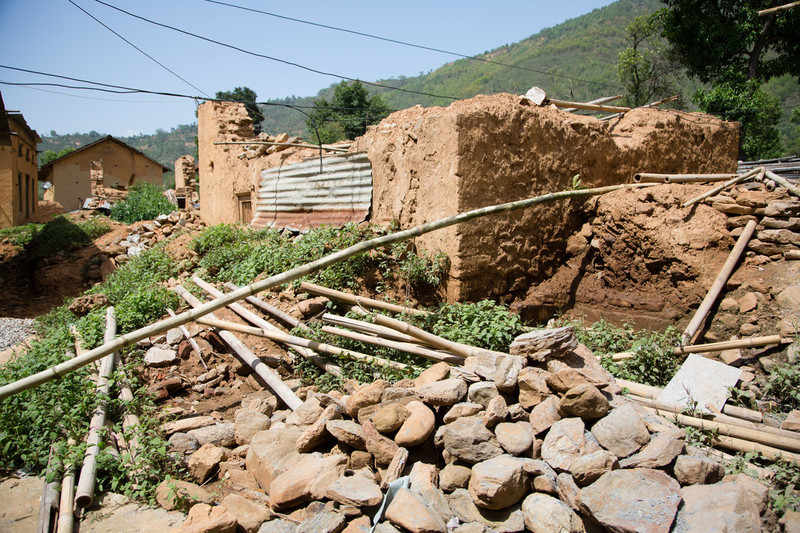
Continuing contraception services and women's health in the wake of disaster, Nepal
Just before midday on Saturday 25 April 2015, a 7.8 magnitude earthquake shook Nepal, causing massive devastation and loss of life. It was the worst natural disaster to strike the country for 80 years – and one the country is still recovering from. Three million people were displaced, 22,000 were injured and 9,000 people lost their lives. According to UNDP, 800,000 homes, were damaged or destroyed. A Nepalese government assessment in 2015 estimated the cost of damage, loss and reconstruction to be $14.6 billion – around three quarters of the country’s entire gross domestic product for 2015 The stories of survivors are harrowing. Twenty-two-year-old Anjana Suwal spent five hours trapped in the rubble of her family’s house. “I was thinking to myself: this is going to be the end of my life: I won’t survive,” she says. “I could hear sounds from outside and I began shouting and shouting, but no one heard me. My throat began to get sore and eventually I couldn’t make any more sounds: I felt so hopeless.” Others speak of their desperate searches to find their children, alongside bittersweet gratitude that the earthquake had occurred on a Saturday rather than an ordinary school day, when the loss of life could have been far higher. The effect on healthcare and family planning was severe. Clinics and hospitals were destroyed and those that survived quickly became overcrowded and had turn away hundreds of injured patients. Millions of people were forced from their homes into tents, often many miles from their usual clinics and family planning centres. Women, girls and orphans were particularly vulnerable: living in tents exposed them to sexual violence, while menstrual hygiene and basic cleanliness in the searing April heat became a struggle. “There was always the fear of getting abused,” says FPAN volunteer Rita Tukanbanjar, who spent 20 days living in a tent after the earthquake. Hitting the ground running When the earthquake struck, FPAN lost no time in taking action. The first job was to do a needs assessment. Then, within 48 hours, FPAN had set up mobile health camps across the country, providing family planning services as well as general health check ups. The team offered essential items like oral rehydration, medicines, food and water. They also distributed contraception and dignity kits, provided women with antenatal checks, and set up blood-testing labs and psycho-social counselling services. Women- and children-friendly spaces provided a haven for the most vulnerable to retreat to in safety. The organisation also organised classes on menstrual hygiene and taught women and girls how to make sanitary pads from scratch. “During that time, girls were facing a lot of problems maintaining their menstrual hygiene,” explains FPAN volunteer Rita Tukanbanjar. “All the shops and services for menstrual hygiene were closed.” FPAN’s classes provided a vital service to women and girls, as well as valuable knowledge for life after the emergency response. Up in the mountains of Rasuwa, close to the border with Tibet, FPAN ran a three-month mobile health camp, providing basic healthcare and family planning services. Equipped for future disasters FPAN, like Nepal, still has visible earthquake damage. “Most of our service delivery points in the Kathmandu Valley are still damaged,” says Sharad Kumar Argal. But amid the tragedy and loss of the earthquake, the impressive and efficient emergency response it galvanised has left FPAN in a much stronger position, should another natural disaster strike Nepal. It also mobilised a huge number of young people to help: many of these volunteers are still working for FPAN, delivering vital sexuality education and community home-based care services.
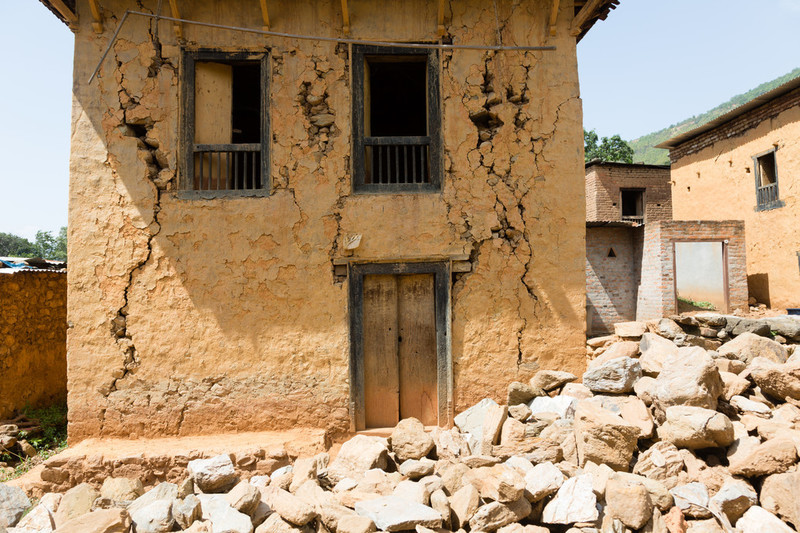
Mobile camps provide emergency services for those unable to return home
Muna Shrestha lives with her husband and two children in Bakultar, a rambling village of mud houses, tea shacks and vegetable, miles off a main road, at the end of a long dirt track in Kavre district, a few hours west of Kathmandu. On the morning of Saturday 25 April 2015, when the earthquake struck, she and her family were cleaning the cowshed. “It was so scary,” she says. “The children were not at home: we were so worried about the children and went looking for them. They were also looking for us.” The days after the earthquake were chaotic. “The schools were closed for a month,” Muna says. “And because all our clothes and possessions were in the ruins, it was difficult to get our things.” Their children were deeply traumatised. “They became scared, and, because of this fear, they wouldn’t eat and they suffered from nausea,” Muna says. As she speaks, she gestures around the family’s old home, at the deep fissures in the mud walls. “This home is cracked by the earthquake. Our family also have another house but that was completely destroyed.” Like many families across Nepal, the Shresthas have been unable to afford to rebuild and make their old home structurally safe. It is a story now ubiquitous across Nepal: a family losing their house and possessions, scarred by trauma, and unable to return home.
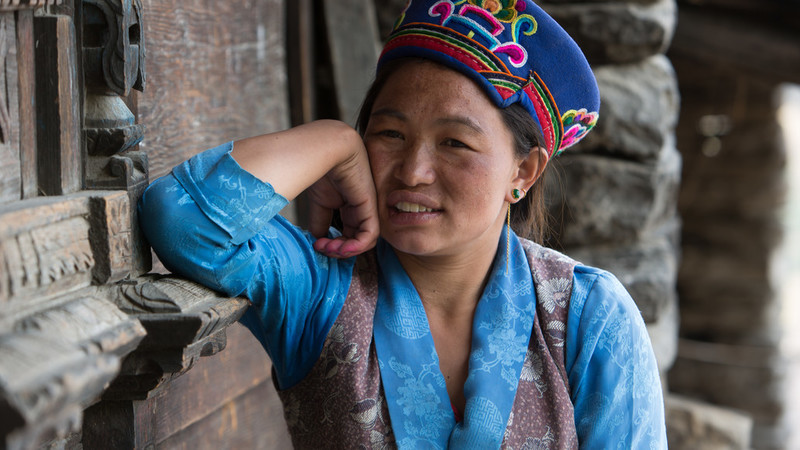
Female volunteers take the lead to deliver life critical health advice after the earthquake
“After the earthquake, there were so many problems. So many homes were destroyed. People are still living in temporary homes because they’re unable to rebuild their homes.” Pasang Tamang lives in Gatlang, high up in the mountains of northern Nepal, 15 kilometres from the Tibetan border. It is a sublimely beautiful village of traditional three-storied houses and Buddhist shrines resting on the slopes of a mountain and thronged by lush potato fields. The 2000 or so people living here are ethnic Tamang, a people of strong cultural traditions, who live across across Nepal but particularly in the lands bordering Tibet. The earthquake of 25 April had a devastating impact on Gatlang. Most of the traditional houses in the heart of the village were damaged or destroyed, and people were forced to move into small shacks of corrugated iron and plastic, where many still live. “Seven people died and three were injured and then later died,” says Pasang. These numbers might seems small compared to some casualty numbers in Nepal, but in a tightknit village like Gatlang, the impact was felt keenly. Hundreds of people were forced into tents. “People suffered badly from the cold,” Pasang says. “Some people caught pneumonia.” At 2240 metres above sea level, nighttime temperatures in Gatlang can plunge. Pregnant women fared particularly badly: “They were unable to access nutritious food or find a warm place. They really suffered.” Pasang herself was badly injured. “During the earthquake, I was asleep in the house because I was ill,” she says. “When I felt the earthquake, I ran out of the house and while I was running I got injured, and my mouth was damaged.” Help was at hand . “After the earthquake, there were so many organisations that came to help, including FPAN,” Pasang says. As well as setting up health camps and providing a range of health care, “they provided family planning devices to people who were in need.” Hundreds of families still live in the corrugated iron and plastic sheds that were erected as a replacement for tents. The government has been slow to distribute funds, and the villagers say that any money they have received falls far short of the cost of rebuilding their old stone homes. Pasang’s house stands empty. “We will not be able to return home because the house is cracked and if there was another earthquake, it would be completely destroyed,” she says. Since the earthquake, she has begun working as a volunteer for FPAN. Her role involves travelling around villages in the area, raising awareness about different contraceptive methods and family planning. Volunteers like Pasang perform a crucial function in a region where literacy levels and a strongly patriarchal culture mean that women marry young and have to get consent from their husbands before using contraception. In this remote community, direct contact with a volunteer who can offer advice and guidance orally, and talk to women about their broader health needs, is absolutely vital.
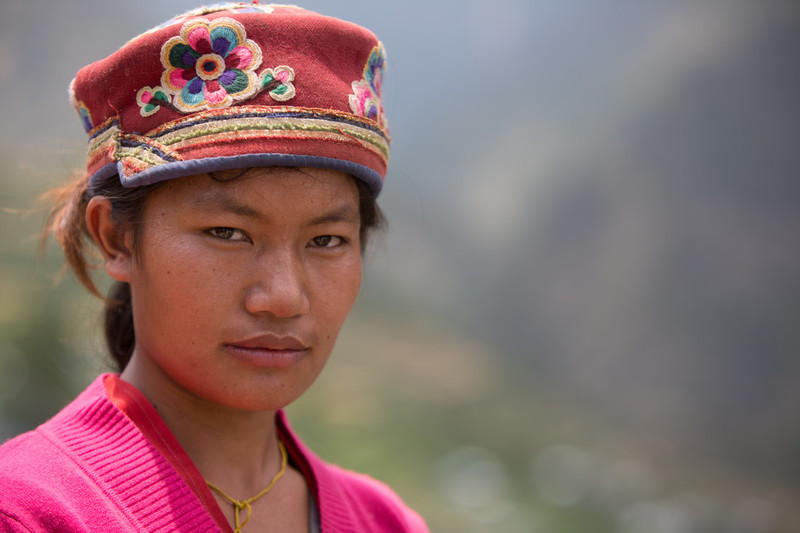
Reproductive health for Nepalese female farmers after the earthquake
Two years after the earthquake that struck Nepal in April 2015, the village of Gatlang in the country’s mountainous north still lies in partial ruin. The houses here are built from enormous slabs of local stone, carved windows and doors, and roofs of stacked wooden planks. They face east towards the rising sun, their facades bedecked in intricate wooden carvings patterns linked to the ancient Buddhist culture of the Tamang people. Today, most of these houses lie in ruin, emptying the heart of the village of people, with most moving to temporary shacks on Gatlang’s fringes. Kopila Tamang is a 24-year-old farmer and mother to two young boys. Her husband, Nakul, works as a lorry driver and is often away. “When the earthquake struck, I was working in the fields,” she says. “If I had been at home, I would have died.” Kopila’s house – or what remains of it – lies at the centre of old Gatlang, on a street of traditional houses that have either entirely collapsed or are uninhabitable due to cracks and structural damage. Piles of stone and wooden cross beams are strewn in what was once a thriving village street. Like many families here, Kopila and her husband and boys have moved into a small shack built from corrugated iron and plastic. This was meant to be a temporary solution, but two years later, they are still living in it, unable to afford the enormous cost of rebuilding their old home. “It needs lots of money,” she says. “I don’t know when we will have the money to build this home again.” FPAN provided emergency health support to families like Kopila’s in the weeks and months after the earthquake. Mobile health camps offered medicines, health check ups, dignity kits, family planning, antenatal checks and other vital services. These days, Kopila gets regular advice from Pasang Tamang, the FPAN reproductive health female volunteer in the village. Kopila had suffered after the birth of her last child. “I didn’t menstruate for eight months, and then after that I started using the [contraceptive] injection,” she says. “But there were some side effects: I started menstruating twice a month.” She then went to a mobile health camp run by FPAN and started using the intrauterine coil. “After that, my menstruation went back to normal,” she says. In a village scarred by the earthquake, access to family planning has brought some much needed stability and relief to Kopila and her small family. “FPAN provide different services and knowledge: I have come to know that having more children can bring suffering, because it’s not enough to just feed children, they must be educated too” she says. “A small family is a happy family.”
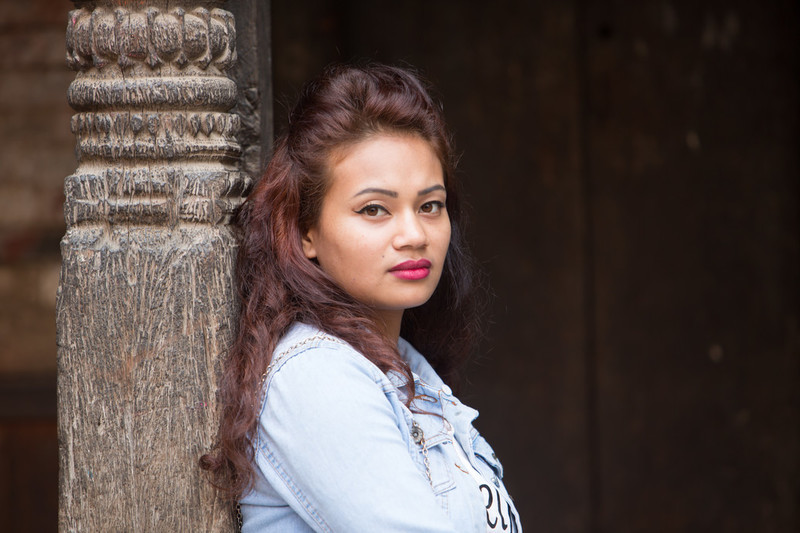
A rescued student devotes her time to rebuilding her community
For 22-year-old student Anjal Auwal, April 25 began as an ordinary day. She had been up late the night, preparing for an exam. Tired after revising, she woke up late and went into the kitchen to eat. It was then that the earthquake struck. “When it struck and I saw the walls shaking and falling down, I collapsed,” Anjal says. “I knew nothing after that. It was just like a dream.” Anjal, a business student from Bhaktapur, spent five hours trapped in the rubble of her family’s house. They lived in one of the traditional mud and wooden houses that line the streets of this ancient temple city. Some of the mud walls and wooden support structure fell on Anjal’s legs and arms, trapping her. “I was thinking to myself: this is going to be the end of my life: I won’t survive,” she says. “I could hear sounds from outside and I began shouting and shouting, but no one heard me. My throat began to get sore and eventually I couldn’t make any more sounds. I felt so hopeless.” Hours later, Anjal heard her uncle’s voice from somewhere beyond the rubble that surrounded her. “I thought this is my chance, and I shouted again in the hope my uncle might hear me.” Eventually, five hours after being trapped, Anjal was pulled from the rubble, injured but alive. “My left side was not working, so my family took me to hospital,” she says. “But the hospital rejected me because they had such limited services. Eventually we found another hospital to care for me.” Anjal’s injuries were extensive. It took six months of medication, rest and rehabilitation for her hand and leg to recover. She also suffered digestion problems: whenever she ate, she would vomit, and the doctors became alarmed that her body was getting little nutrition. Two years later, she has more or less recovered. “I still have a few problems with digestion, I have scars from the wounds and I occasionally gets pain in my hands, but things have improved a lot,” she says. Her sickness and long rehabilitation meant her studies were interrupted, but eventually she managed to take the exam and passed. Having time off has given her time to reflect on what she wants to do with her life. She’s now planning to volunteer for FPAN, after hearing about it from friends at school. “I haven’t so far because of my health problems,” she says. “But now I’m eager to join and to learn about sexual health and family planning. I’ve realised it’s very important.”

A mother in need volunteers to save others in the earthquake
“When the earthquake struck, I was on the sixth floor of my family’s house, with my son. For 15 or 20 minutes, I couldn’t do anything. I tried to open the door but I couldn’t: I was trapped.” Rita Chawal is 32 years old and married with a small son, who was four at the time of the earthquake. They lived together with 15 other members of her husband’s family in one of the tall, traditional houses that line the streets of Bhaktapur, an ancient temple city 15 kilometres from Kathmandu. The earthquake caused extensive damage to the city, bringing down old brick houses, shops and schools, and destroying some of the medieval temples in the network of squares that make up the city’s historic centre. The entire back of Rita’s house collapsed. “Eventually, we managed to come down from the sixth floor, but once we got to ground level, we saw that many houses had collapsed,” she says. “It was really terrifying seeing those scenes. Nevertheless, we managed to cross over the demolished buildings and get to the public football grounds, where we stayed together and lived in tents.” Sexual health and the menstrual needs of women and girls tend to be neglected by aid organisations in the aftermath of natural disasters. One problem is that WASH (Water, sanitation and hygiene) response tends to be coordinated and designed by men, who can more easily overlook women’s needs. This is why organisations like FPAN are so vital in frontline response after disasters. “After the earthquake, family planning services stopped for a few days,” Rita explains. “But after that there were health camps [run by FPAN] that distributed dignity kits and family planning devices. I received dignity kits [sanitary pads etc] from them.” Rita was so moved by the suffering around her and so inspired by the work of FPAN and other NGOs, that, after attending to her own and her family’s needs, she began working as a volunteer distributing dignity kits to women and girls living in tents. FPAN services are vital, both during emergency response and in normal life. Rita says the fact that FPAN community mobilisers and volunteers can mediate well between local people and the health services, and articulate their needs, makes them unique in Nepal. “The activities that FPAN are doing are really good,” she says. “I and the women in this community really want FPAN to continue their services because they are the best ones we get. We are really worried they might stop.”
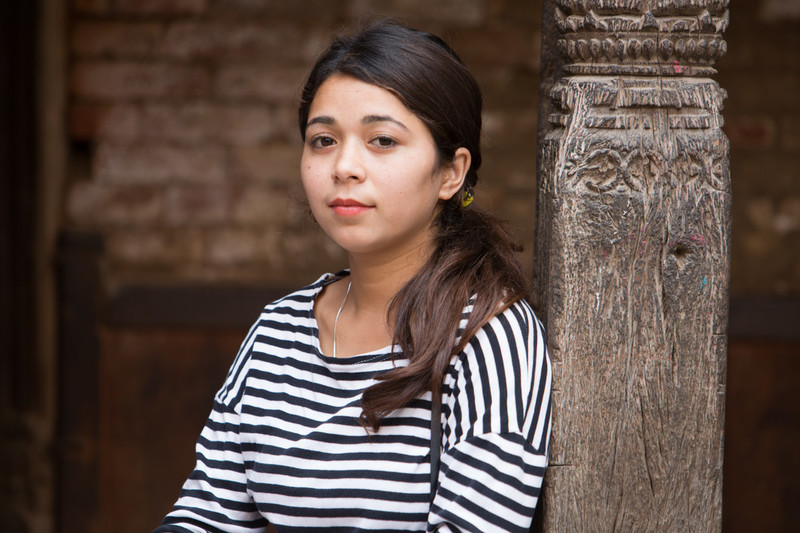
Thousands of young volunteers join us after the earthquake
The April 2015 earthquake in Nepal brought death and devastation to thousands of people – from which many are still recovering. But there was one positive outcome: after the earthquake, thousands of young people came forward to support those affected as volunteers. For Rita Tukanbanjar, a twenty-two-year-old nurse from Bhaktapur in the Kathmandu Valley, the earthquake was an eye-opening ordeal: it gave her first-hand experience of the different ways that natural disasters can affect people, particularly women and girls. “After the earthquake, FPAN was organising menstrual hygiene classes for affected people, and I took part in these,” she says. The earthquake severely affected people’s access to healthcare, but women and girls were particularly vulnerable: living in tents can make menstrual hygiene difficult, and most aid agencies tend to neglect these needs and forget to factor them into relief efforts. “After the earthquake, lots of people were living in tents, as most of the houses had collapsed,” Rita says. “During that time, the girls, especially, were facing a lot of problems maintaining their menstrual hygiene. All the shops and services for menstrual hygiene were closed.” This makes FPAN’s work even more vital. The organisation stepped into the breach and organised classes on menstrual hygiene and taught women and girls how to make sanitary pads from scratch. This was not only useful during the earthquake, but provided valuable knowledge for women and girls to use in normal life too, Rita says: “From that time on wards, women are still making their own sanitary pads.” In an impoverished country like Nepal, many women and girls can simply not afford to buy sanitary pads and tampons. Nepal is one of the poorest countries in the world with gross domestic product per capita of just $691 in 2014. In this largely patriarchal culture, the needs of women often come low down in a family’s priorities. “This is very important work and very useful,” Rita says. The women and girls also learned about how to protect themselves from sexual violence, which saw a surge in the weeks after the earthquake, with men preying on people living in tents and temporary shacks. Rita and her family lived in a tent for 20 days. “There was always the fear of getting abused,” she says. Eventually they managed to return home to live in the ruins of their house: “one part was undamaged so we covered it with a tent and managed to sleep there, on the ground floor.” Seeing the suffering the earthquake had caused, and the work FPAN and other organisations were doing to alleviate it, cemented Rita’s decision to begin volunteering. “After the earthquake, when things got back to normal, I joined FPAN.” She also completed her nursing degree, which had been interrupted by the disaster. “Since joining FPAN, I have been very busy creating awareness about sexual rights and all kinds of things, and running Friday sexual education classes in schools,” Rita says. “And since I have a nursing background, people often come to me with problems, and I give them suggestions and share my knowledge with them.” She also hopes to become a staff nurse for FPAN. “If that opportunity comes my way, then I would definitely love to do it,” she says.
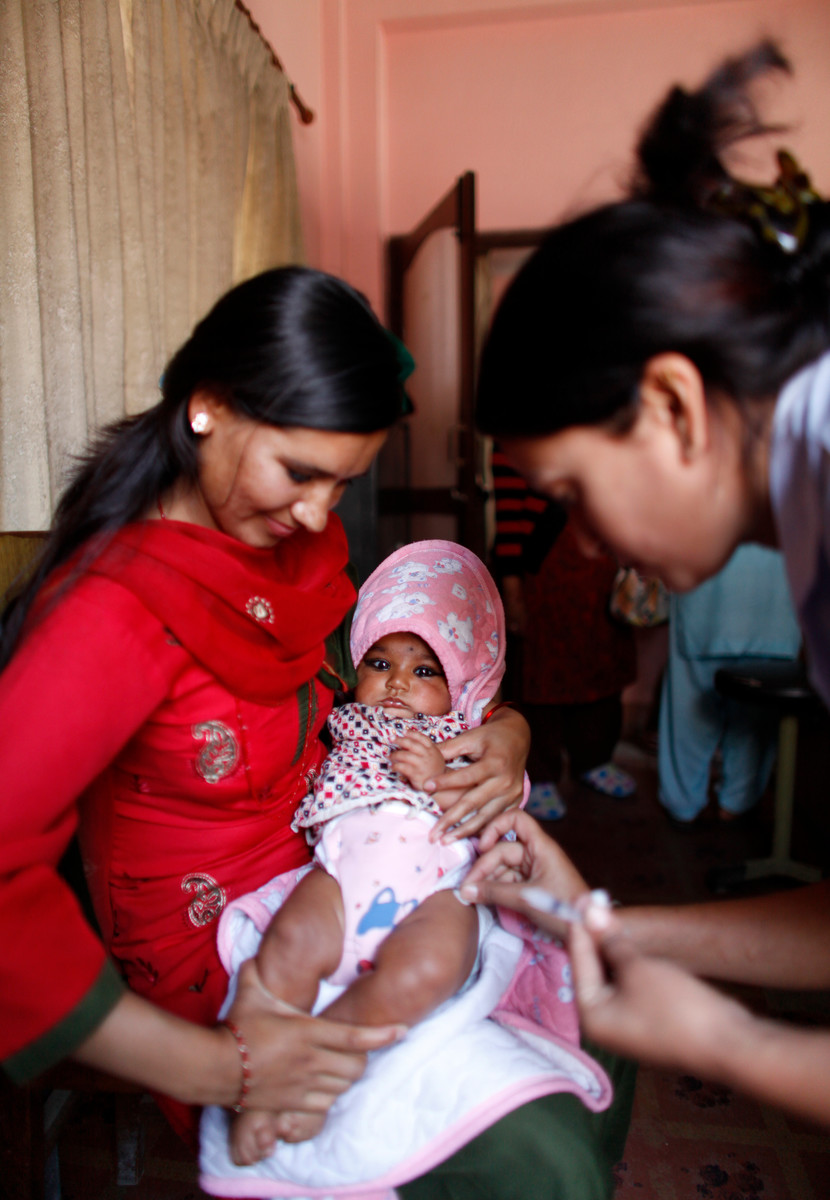
Emergency rescue in Kathmandu Valley
For Sharad Kumar Argal, the weeks after April 25 are a time he will never forget. Sharad has been working for FPAN for twenty years, currently as Kathmandu Valley branch manager. When the earthquake struck, the Kathmandu Valley was among the worst affected area in the country. Thousands of people were killed, injured and displaced, and many of the valley’s houses, schools, buildings and historic temples were destroyed or damaged beyond repair. The 2015 earthquake has been a major test for the country, with bureaucracy and alleged abuse hampering reconstruction. But for FPAN, in the days after the quake struck, there was no time to waste. “The first thing we did was to identify the needs of the people,” Sharad says. “We realised people were being deprived of services,” with many clinics and hospitals damaged, closed or overwhelmed by patients. By the second day after the earthquake, we were conducting health camps. All the volunteers and staff came together and made a plan: we identified the most affected areas and went there with mobile services.” The teams divided their work into two categories: first and second level. During the first phase, they offered check ups for those injured and distributed essential items like oral rehydration, medicines, food and water. During the second phase, a few days later, they gave more comprehensive services: the team set up mobile labs to carry out blood tests, provided contraception and dignity kits [sanitary pads etc], and gave antenatal checks and psycho-social counselling. They also set up women- and child-friendly spaces, in partnership with the UN Population Fund and other NGOs. For women, safe spaces to spend time and access support were vital, particularly given how insecure and vulnerable their temporary accommodation was. “Children were very affected with trauma, as well as physically,” says Sharad. “We set up child-friendly spaces where children could come, spend time and play with toys. We even had a tutor to give them education, as well as counsellors.” Today, the work of the FPAN Valley branch office is still heavily affected by the earthquake. Their Bhaktapur clinic was completely destroyed and they now operate out of tiny room in the ancient heart of the city, surrounded by building sites and the sounds of cement mixers, while they await permission from government and community leaders to begin building a new centre. “Most of our service delivery points are still damaged,” says Sharad. “This is the main hindrance to giving services to the people: we want to provide services but due to the lack of space, we often can’t provide the services they want. This is one of the biggest impacts we are still facing.”
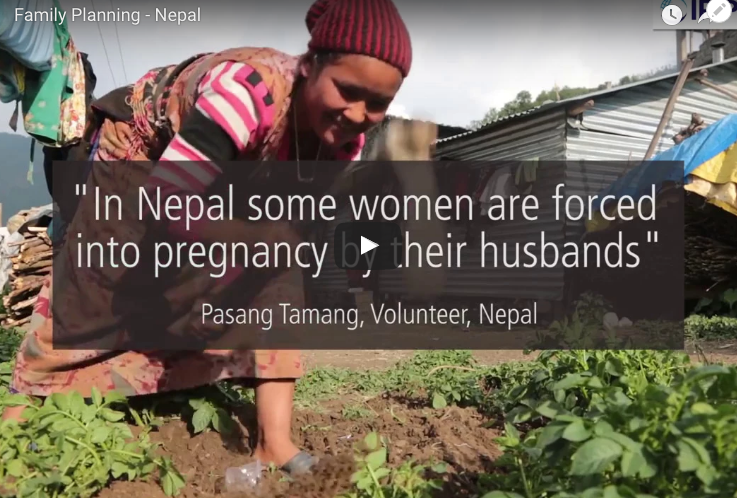
Family Planning in Nepal
For people across Nepal, access to contraception and family planning services can mean the difference between life and death. Yet in this largely patriarchal culture, where having four or five children has long been the norm, contraception remains an alien idea to many, and access to it is strictly controlled by male heads of households. IPPF Family Planning Association of Nepal is working with local community to increase awareness and access to family planning among rural communities and people affected by the 2015 earthquake. See how they're ensuring access and changing lives
Pagination
- Previous page
- Page 3
- Next page







